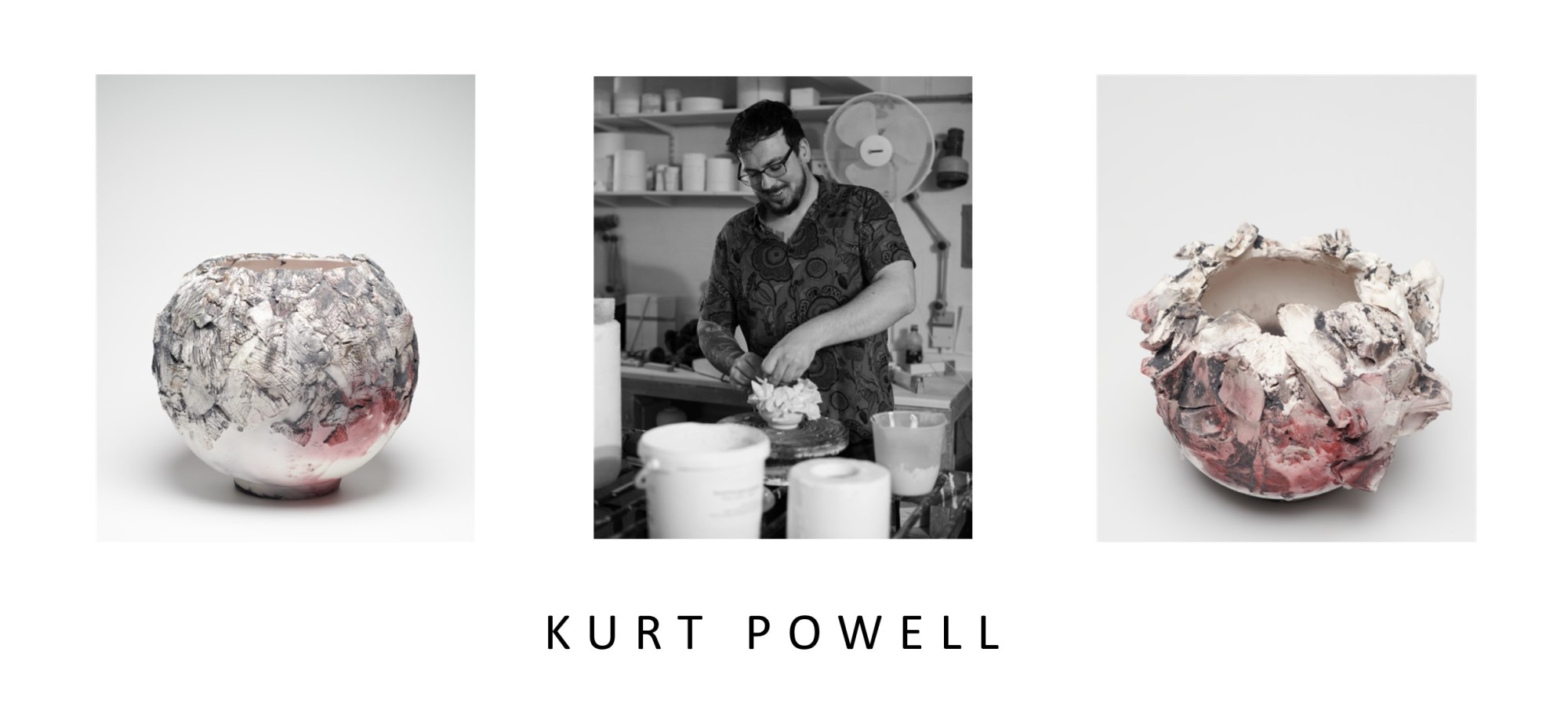2024 AWARD WINNER | Staffordshire University
Posted on - 15th August 2024

KURT POWELL Staffordshire University | BA(Hons) Designer Maker
Recipient of the Potclays Graduate Award in 2024 as part of our Educlaytion programme
Please tell us about yourself, your work, and your career path so far.
My name is Kurt Powell, I am a ceramicist from Stoke-On-Trent. I started my ceramic journey almost 14 years ago for Wade Ceramics as a bench casting apprentice, after finishing my apprenticeship I expressed interest in learning mould making and other positions in the ceramic process. Over the course of my years there, I had gained several years of experience in slip and glaze preparation, mould making and bench casting. My work focuses on textures from nature and is a mixture of traditionally glazed ceramic work and pit fired porcelain pieces. I use textures and glaze to create marine inspired pieces that highlight the effects of coral bleaching due to climate change, my pit fired work is inspired by earthy textures, the finish I achieve by using sustainable organic material that gives flashes of colouring in the firing process. I only use fell wood and washed up driftwood in my pit firings to make it as sustainable a practice as possible.
Describe your first encounter with clay?
My first encounter with clay was at Newcastle-Under-Lyme college in GCSE applied art as a high school student. I instantly took a liking to ceramics and spent most of my time in the ceramic department hand building and exploring the materials available. My tutors at the time were massively supportive and helped me to learn basic skills and develop a bigger interest in the possibilities ceramics has and artists to look at.
Why did you choose ceramics?
As a creative person ceramics stood out during my school days as something completely new and exciting. Looking at books of ceramicists and the colossal variety of work in different time periods and cultures was a well of inspiration that would never run dry. I have always enjoyed working with my hands creating things, I actively tried to find an apprenticeship in ceramics to gain more knowledge about it to eventually build my skills enough to create my own work one day.
Where do you find inspiration? Places, people, objects, music…
My main inspirations in my work come from looking at nature. Nature provides a vast library of textures, colours and patterns. My work is influenced from experiences diving and going for walks on the coast, looking at the natural scenery and the depth of colour is the easiest way to get myself inspired and questioning, how I can recreate these features or add interesting elements to my work. After nature my biggest inspirations are simply looking at other artists works from different time periods and reading books on ceramic history.
What are the tools of your trade that you can't do without?
The tools I can’t do without daily are quite simple but make a huge difference to my work. My most used tools are my straight edge metal kidney, my curved metal knife for cutting away at my cast pieces. Sieves for glaze are greatly important to make sure that only my glaze ingredients get through with no lumps or unmixed materials. Good quality glaze brushes are always important to get the best application on first time.
What is a typical day in the studio like?
I start early in the morning, applying the textures to my pieces takes a long time because of drying the clay out so it holds its shape. My first job is to clean out my moulds of any debris, then mix all my porcelain up ready to cast everything. After filling my moulds, I typically start to prepare my clay for applying to the clay bodies. The casting times give me the opportunity to spend time on the lathe making models for future projects or time to answer emails. After finishing my casting, the last job of the day is to prepare glazes and pit firings. This typically is a few pieces to be kiln fired and layering the organic materials around bisque fired pieces then preparing to build up the pit for a firing overnight.
What do the next 12 months have in store for you?
My first steps after graduating will be to continue to develop my pit firing techniques while moving into a new studio space to continue developing on my current body of work. I will be looking to apply for ceramic and craft shows and markets to sell my work. In the time between shows I’ll be doing lots of research on wood firing kilns, which I’m hoping to start building to test by the end of the year. So, the next 12 months should be lots of making and developmental work and marketing and networking opportunities.
What advice do you have for those currently studying ceramics in further education?
Make the most of your time in workshops and get as much information as you can from tutors and technicians. Its pretty easy to take the environment for granted and your time really is for building your skills and knowledge so that when you leave, you’re ready to work on your own. Make sure to practice in your spare time, things that you want to do. Making things that you find interesting and enjoyable are important for everything creative person. Get in touch with other people, networking is a great way to learn new skills and make new friends in the ceramic world. Have fun and enjoy what you do, and you’ll never regret it.

